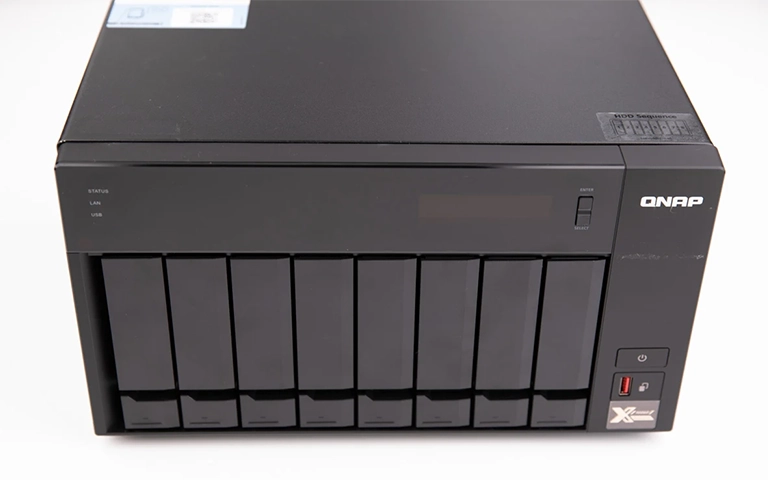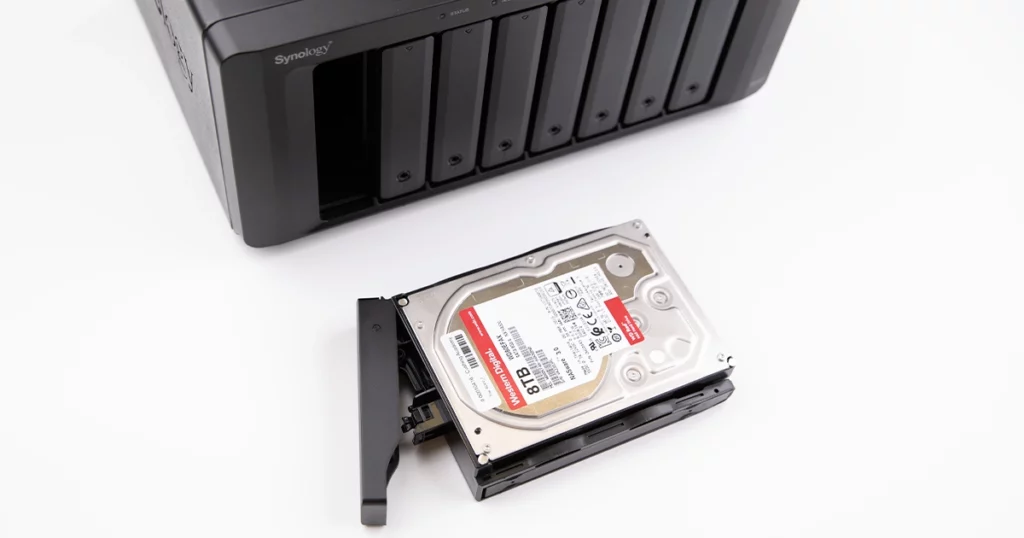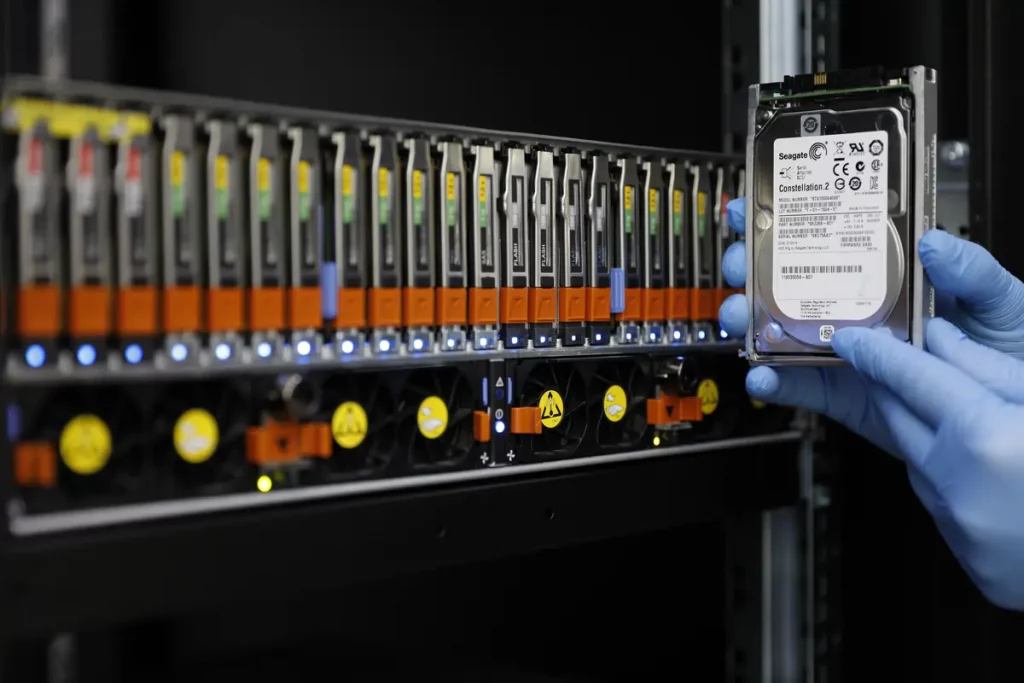As data volumes continue to grow, enterprises seek storage systems that combine speed, capacity, and resilience. RAID 60 offers a balanced solution for organizations that handle large-scale workloads and require strong fault tolerance.
This configuration merges the benefits of RAID 0 and RAID 6, providing both performance and protection. It’s commonly used in servers, data centers, and virtualized environments where uptime and reliability are critical.
In this guide, you’ll learn how RAID 60 works, its advantages and limitations, and how data recovery professionals handle failures in such complex setups.

How RAID 60 Works
RAID 60 combines striping from RAID 0 with dual parity from RAID 6, creating a configuration that balances speed and data protection. It requires at least eight drives, divided into multiple RAID 6 groups, which are then striped together for higher performance.
Within each RAID 6 set, two parity blocks are distributed across all drives. This setup allows the system to withstand up to two drive failures per RAID 6 group without losing data. The RAID 0 layer then stripes data across these groups, improving overall read and write performance.
This hybrid design is ideal for workloads that require both throughput and redundancy, such as database servers, virtual machines, and large storage clusters.
While it offers impressive performance and reliability, RAID 60 also demands significant storage capacity and careful management to maintain stability.
To better understand its foundation, see our guide on What is RAID 6 for a closer look at how dual parity protection works.

RAID 60 vs Other RAID Levels
To see how RAID 60 compares with other configurations, here’s a quick overview of its key differences from RAID 50 and RAID 6.
Here is a detailed comparison:
If you’d like a deeper look at these two high-level configurations, visit RAID 50 vs RAID 60 to explore performance and redundancy differences in detail.
Advantages of RAID 60
RAID 60 offers strong performance and reliability, making it a preferred setup for high-demand systems. Below are its key benefits:
High Fault Tolerance: Each RAID 6 group can sustain up to two drive failures, minimizing the risk of total data loss.
Improved Performance: The RAID 0 striping layer enhances read and write speeds, ideal for workloads requiring fast data access.
Scalability: Additional drives or RAID 6 groups can be added to expand capacity without significant downtime.
Balanced Workload Distribution: Data and parity information are evenly distributed, improving performance consistency.
Suitable for Enterprise Environments: Perfect for organizations running virtualization, database management, and large-scale storage systems.
For a broader understanding of other configurations, check our post on Types of RAID.
Limitations of RAID 60
While RAID 60 provides excellent protection and performance, it also comes with some drawbacks that should be considered before deployment.
High Cost of Implementation: The setup requires a minimum of eight drives and advanced controllers, which increases hardware expenses.
Reduced Storage Efficiency: Dual parity in each RAID 6 group lowers the total usable capacity compared to RAID 50.
Complex Configuration: Managing multiple RAID layers can be challenging and requires skilled administration to avoid configuration errors.
Long Rebuild Times: Replacing failed drives and rebuilding parity data can take a long time, especially on large-capacity drives.
Risk During Rebuild: If another drive fails during the rebuild process, data from that RAID group may become unrecoverable.
To learn more about potential reliability concerns, review our guide on RAID Failure Rate.

Fast turnaround times for business-critical data
Data Recovery from RAID 60 Arrays
Recovering data from a failed RAID 60 setup can be complex due to its layered structure and dual parity design. Failures may involve individual drives, RAID controllers, or logical corruption affecting one or more RAID 6 groups.
In some cases, improper rebuild attempts or parity synchronization errors can worsen data loss. That’s why handling recovery in controlled environments is crucial.
At RAID Recovery Services, our engineers use advanced tools to reconstruct each RAID 6 group before rebuilding the full RAID 60 volume. This process involves:
Identifying drive order and configuration details
Repairing damaged parity blocks
Extracting and validating recovered data before delivery
These steps ensure that the recovered files remain accurate and fully usable.
If you suspect your RAID 60 system has failed, avoid further rebuilds and contact professionals immediately. Visit our guides on Troubleshoot RAID Failure and RAID Controller Failure Recovery to learn more about addressing critical system issues.

Is RAID 60 Right for Your Business?
RAID 60 is best suited for enterprises that need both performance and high fault tolerance. If your organization handles heavy workloads, database servers, or virtualized systems where uptime is critical, this configuration can provide a reliable foundation.
However, it may not be ideal for smaller businesses with limited budgets or simple storage needs. The cost, maintenance, and complexity often outweigh the benefits in smaller environments.
Before implementing RAID 60, consider factors such as scalability, available hardware, and your recovery strategy. Even with strong redundancy, unexpected failures can still occur.
When they do, RAID Recovery Services is here to help. Our team specializes in diagnosing and recovering data from complex RAID systems, including RAID 60 arrays.
For more on what causes RAID failures, visit Reasons for RAID Data Loss.
Trust the experts with proven results
Frequently Asked Questions
What is RAID 60 used for?
RAID 60 is designed for enterprise environments that require both high performance and strong fault tolerance. It’s commonly used in database servers, virtualization platforms, and data centers that manage large workloads.
How many drives are required for RAID 60?
A RAID 60 setup needs at least eight drives, as it combines multiple RAID 6 groups striped together. Each group requires a minimum of four drives to maintain dual parity protection.
How reliable is RAID 60 compared to other RAID levels?
RAID 60 offers higher reliability than RAID 50 because it uses dual parity. This means each group can withstand up to two drive failures without losing data, making it one of the most resilient configurations.
Can RAID 60 arrays fail?
Yes. Despite its strong redundancy, RAID 60 can fail due to controller issues, multiple drive failures within the same group, or user errors during rebuilds. Regular monitoring and professional maintenance help reduce these risks.
How is data recovered from a failed RAID 60?
Data recovery involves reconstructing each RAID 6 group first, then rebuilding the full RAID 60 array. At RAID Recovery Services, our specialists use advanced tools to restore parity information and recover your data safely.